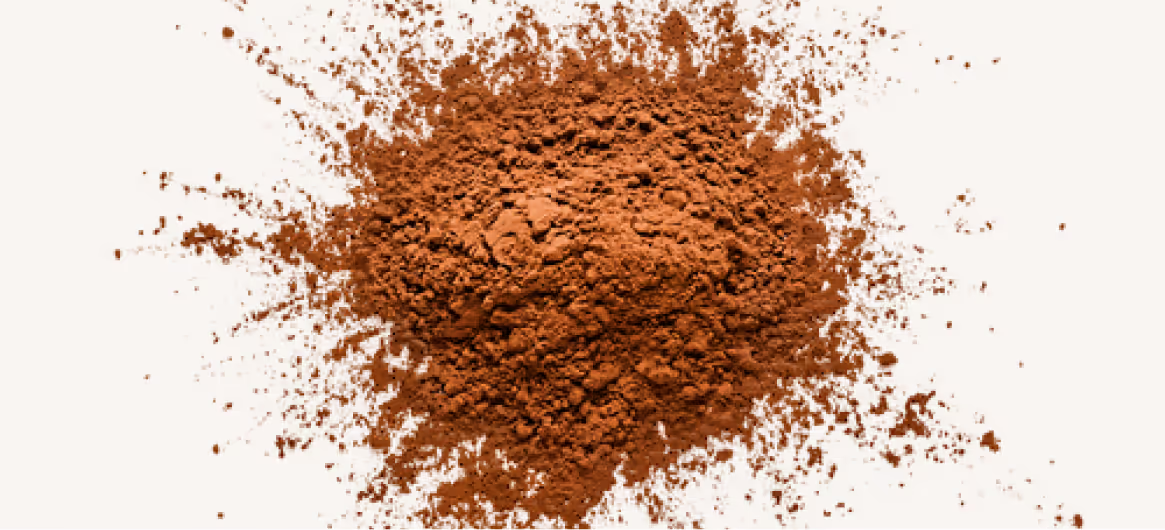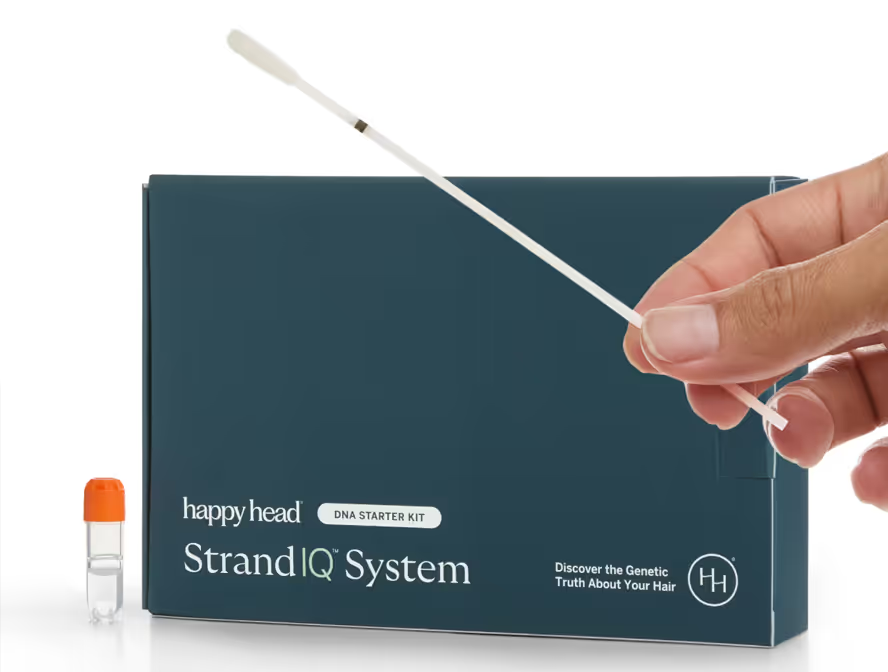Finasteride is a common and well-studied treatment for male and female pattern hair loss. It works by blocking the enzyme that turns testosterone into DHT—the hormone that causes hair follicles to shrink over time. By lowering DHT in the scalp and bloodstream, finasteride can help keep the hair you have and, for some people, even support new growth.
While the drug has been a game changer for many, not everyone experiences the same level of success. Genetic differences play a major role in determining how well finasteride works for you. By understanding your DNA with insights from StrandIQ, you and your dermatologist can make more informed decisions about whether finasteride is likely to help—and what adjustments might improve your results.
Genetics and Finasteride Response
Your response to finasteride depends on two main genetic factors:
- 5-alpha-reductase activity – Variants in the SRD5A2 gene influence the activity of type II 5-alpha-reductase. Individuals with higher baseline enzyme activity may require more potent suppression to reduce DHT to hair-friendly levels.
- Androgen receptor sensitivity – Variants in the AR gene can make hair follicles more or less sensitive to DHT. Even with lowered DHT, some people’s follicles remain reactive, affecting outcomes.
In addition, genes affecting drug metabolism—such as those in the CYP3A family—can influence how quickly finasteride is processed and cleared from the body. Rapid metabolizers may have lower drug exposure, while slow metabolizers may experience greater suppression but also a higher risk of side effects.
Finasteride Effectiveness: Recommendations by Likelihood Level
Finasteride works by inhibiting the 5-alpha reductase enzyme, lowering dihydrotestosterone (DHT) levels in the scalp. Reduced DHT can help slow, stop, or in some cases partially reverse hair thinning. Your genetic profile can influence how well finasteride works for you, making it important to understand your effectiveness level before committing to long-term use.
Top Strategies for Low Effectiveness
If your Happy Head StrandIQ™ analysis suggests that you may respond less favorably to finasteride, it may not significantly slow hair loss or improve density on its own.
- Consider alternative treatments
Explore other options such as dutasteride or topical combination therapies, which may offer stronger DHT suppression. - Leverage non-hormonal therapies
Add minoxidil, caffeine-based serums, ketoconazole shampoo, peptides, or saw palmetto to support hair growth and scalp health. - Monitor results closely
Track changes with photos every 1–3 months and be ready to consult with your doctor about how to best adjust your plan within 3–6 months if no improvement is seen.
Moderate Likelihood of Effectiveness
If your StrandIQ™ analysis indicates a moderate impact on finasteride effectiveness, strategic adjustments can help improve outcomes.
- Commit to consistent use
Take finasteride daily as prescribed and assess progress at 3, 6, and 12 months. - Boost results with combination therapy
Pair with minoxidil and supportive treatments such as caffeine-based serums, ketoconazole shampoo, or peptides. - Support scalp and follicle health
Maintain a nutrient-rich diet, manage stress, and ensure good sleep habits to promote optimal hair growth.
High Finasteride Effectiveness
If your genetics suggest you may respond well to finasteride, with strong potential for slowing hair loss and maintaining or improving density.
- Maintain a consistent routine
Continue taking finasteride as directed without interruptions to maximize DHT suppression. Ensure that your physician adjusts dosage to your drug metabolism. - Protect and enhance results
Use alongside minoxidil and other topical treatments such as caffeine serums, ketoconazole shampoo, peptides, or saw palmetto. - Schedule regular check-ins
Use quarterly progress photos and yearly evaluations with your Happy Head dermatologist to ensure your plan remains effective over time.
The Bottom Line
Finasteride can be a highly effective treatment for androgenetic alopecia, but your genetic profile can heavily influence results. By understanding your enzyme activity, androgen receptor sensitivity, and drug metabolism rate, you can work with your Happy Head physician to create a hair restoration plan that’s tailored to your unique biology.
Whether you respond best to standard dosing or need a more advanced regimen, genetics can help guide you toward the most effective and efficient path forward.
Resources
StrandIQ SNP Marker Count: 6
StrandIQ Genes for Trait:
SRD5A1, SRD5A2
References:
Hayes, V.M., et al. (2007). 5alpha-Reductase type 2 gene variant associations with prostate cancer risk, circulating hormone levels and androgenetic alopecia. International Journal of Cancer, 120(4), 776–780. PMID: 17136762.
Li, X., et al. (2011). Meta-analysis of three polymorphisms in the steroid-5-alpha-reductase, alpha polypeptide 2 gene (SRD5A2) and risk of prostate cancer. Mutagenesis, 26(3), 371–383. PMID: 21177315.
Vila-Vecilla, L., Russo, V., de Souza, G.T. (2024). Genomic markers and personalized medicine in androgenetic alopecia: A comprehensive review. Cosmetics, 11(5), 148.
Xiao, Q., et al. (2020). Structure of human steroid 5α-reductase 2 with the anti-androgen drug finasteride. Nature Communications, 11(1), 5430. PMID: 33110062.
Zeng, X.T., et al. (2017). Association between SRD5A2 rs523349 and rs9282858 polymorphisms and risk of benign prostatic hyperplasia: A meta-analysis. Frontiers in Physiology, 8, 688. PMID: 28955247.
This content, including StrandIQ™ DNA analysis reports and any Happy Head products and/or services referenced therein, is for informational and cosmetic purposes only. It is not intended to diagnose, treat, cure, or prevent any disease. This content does not constitute medical advice and should not be used to make healthcare decisions. References to prescription treatments are educational in nature. Always consult a licensed healthcare professional for any medical concerns or treatment decisions.








.avif)

